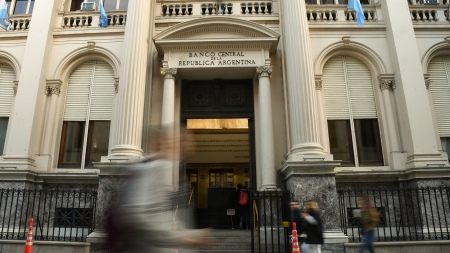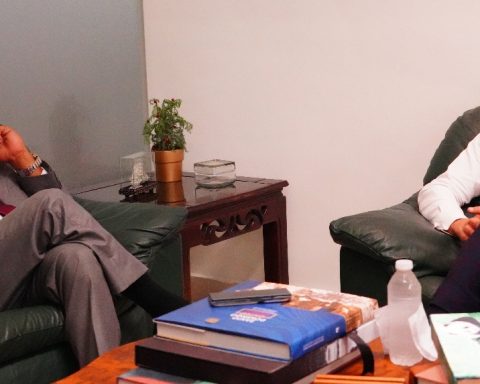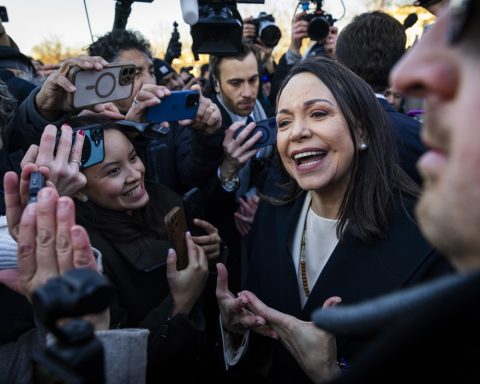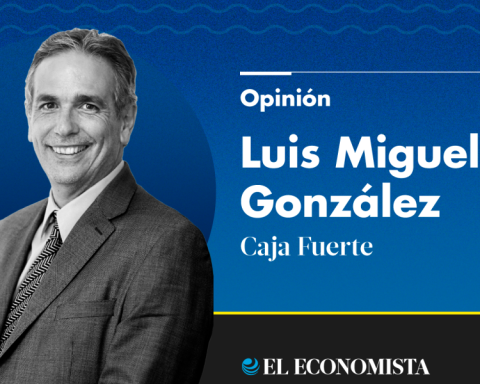The Central Bank’s decision to keep the interest rate of its monetary policy unchanged, despite the slowdown in inflation in November, is a measure that helps rebuild the demand for pesos and avoid a triggering of the exchange rate gap, analysts agreed. consulted by Telam.
Specifically, the BCRA resolved that the monetary policy rate will remain at 75% TNA (6.25% monthly) after the Indec Consumer Price Index (CPI) marked 4.9% overall, after having marked 6.3% the previous month and reached 7.4% in July.
The objective of the monetary authority, it has been maintaining in recent statements, is to “gradually achieve a positive real interest rate that is an effective protection for savings in pesos, as well as an important instrument for anti-inflationary policy.”
In total, the BCRA applied three increases in interest rates since inflation accelerated in July: 800 points in July, to go from 52 to 60% per year; another of 950 points in August; and the last of 750 points in September to reach 75% per year.
The economic policy of the Government in the last five months to curb the inertia in prices had a fiscal leg (with a drop in real spending), other monetary (null direct monetary financing to assist the Treasury and raise rates) and another of management of reserves and sectoral price agreementsin exchange for greater certainty when importing inputs.
Since then, it was possible to channel the program agreed with the IMF and improve the management of the debt in pesosof which all its maturities were renewed in 2022 and extra financing was obtained to meet the primary deficit goal of 2.5% of GDP for this year.
These are results that, according to the Minister of Economy, Sergio Massa, leave the economic team “satisfied but not happy”.
These are results that, according to the Minister of Economy, Sergio Massa, leave the economic team “satisfied but not happy”
“I think that what the Central Bank is doing is not lowering interest rates. The market still expects inflation around 100 percent and monetary policy rates yield 107. Lowering the rate earlier, only with positive inflation data would have been a premature decision,” Juan Pablo Albornoz, an economist at Invecq, told Télam..
In this sense, he pointed out that the inflation data for November “was good”, but only “a relief compared to what we had been seeing” of levels around 7% in recent months and even supported by “very strong deflation in seasonal products”.
“I would not say that we are already seeing a very substantial slowdown in inflation. I would wait for the next two data to say there is a change in trend or not,” Albornoz said.
The position of maintaining positive real rates was one of the aspects that the interim president of the IMF, Gita Gopinath, remarked as “essential” to “reduce the persistent high inflation and strengthen the demand for assets in pesos.”
This was stated by the official last Friday, after the agency approved the goals for the third quarter of the agreement signed with Argentina, since -she said- this would help to obtain “improvements in competitiveness and reserve coverage, while It would avoid relying on ad-hoc exchange rate incentives and restrictions, as they are not a substitute for consistent macroeconomic policies.
In a recent macroeconomic report, the consultant Analityca affirmed that “there is no place to reduce interest rates or the rate of depreciation of the official exchange rate”another of the tools that the Central Bank manages to avoid further delay in the exchange rate, even with somewhat lower inflation.
As detailed, “structural” and inertial inflation reflected in core prices increased 5.8% in November in the IPC-CABA and 4.8% at the national level, while registered wages would accelerate until the first quarter of 2023, with the already agreed parity increases come into effect.
This is added to the fact that January and February are months of historic volatility in the exchange market due to the drop in demand for pesos and the low income of dollars from the countryside, in a context of an exchange rate gap of around 80%.
“There is no room to alter the moderate change in the macroeconomic regime that the government is attempting, with positive interest rates in real termsa greater depreciation of the peso and a significant drop in primary spending,” pointed out the consultancy run by Ricardo Delgado.
For the director of Anker Latin America, Federico Furiase, the space opens in the coming months so that the Government can carry out an “administration of the situation”which would allow the BCRA “to reach March with net reserves of 3.4 billion dollars, despite the drought”, together with a slowdown in inflation “in the margin”.
“I see interest rate beating inflation and inflation beating the pace of the official exchange rate. The Central Bank will probably take more time to lower the interest rate, because otherwise you would be taking the risk of a greater exchange rate gap,” Furiase pointed out in a presentation organized by Adcap Grupo Financiero.


















